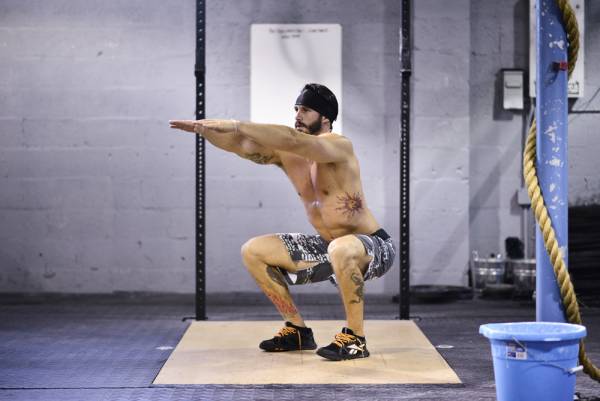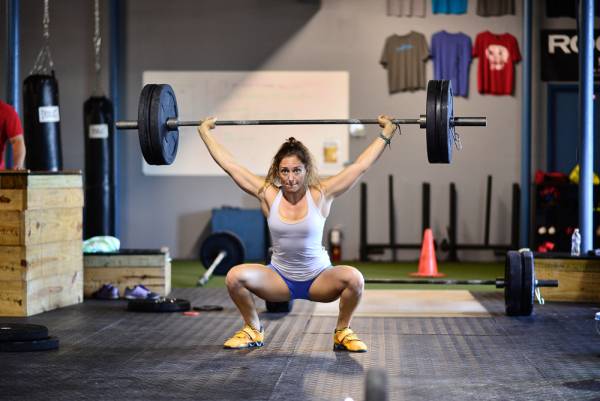As a trainer, I’m willing to acknowledge when I’m wrong. I’m sure many people in my personal life wish this quality would transcend into that realm, as well.
But in all seriousness, over the past decade I’ve made plenty of mistakes regarding the programming of workouts and teaching movements to my clients. I know this because I’m constantly self-educating in order to provide my clients with the best information available.
With that said, when I started training full time I was heavily influenced by the material in The CrossFit Journal. During those early days, I used many of the cues presented in those issues with all my clients. However, as time wore on, I realized some of those movement cues weren’t applicable to everyone.
Today many of those early CrossFit Journal articles have been integrated into the CrossFit Level 1 Training Guide as teaching tools. So, I’m going to revisit a few of the older cues I feel could use a little updating. Hopefully, these progressive coaching tips can help you create better movement patterns and increased performance in yourself and your clients.
Evolved Cueing for the Squat
One of the cues seen in the CrossFit Level 1 Training Guide that I take exception to relates to squat mechanics. Many trainers will use the cue send your “butt back and down” to teach a client how to initiate the squat.1
The reality is a one-size-fits-all cueing approach like that rarely works, primarily because any form of cueing should be somewhat individually specific. Plus, the “butt back and down” cue requires a client to have sufficient joint mobility coupled with a body-type that lends itself to squatting correctly in this manner. Unfortunately, a large segment of the population cannot execute this movement in a kinesthetically acceptable way.
For many of you, when you send your “butt back and down,” your torso and head will pitch forward and down. This occurs because the upper body is acting as a counterweight in order to prevent you from falling on your ass. This is attributed to the fact that most adults have crappy ankle mobility and individually unique anthropometrics (ex: long femur/long torso) and following this cue asks us to defy physics.

On a personal level, I know how disheartening it can be when you push your “butt back and down” and you can’t maintain a ramrod straight upper body because of the factors mentioned above. A better cue for people like me, when they initiate the squat descent, is to bend at the knees and push them forward and out, while you let your pelvis drop between your feet. This format aids in the maintaining of an upright torso while the ankle and hip have a more favorable relationship.
Maintaining a Neutral Spine
The second couple of cues we’ll examine deal with both squat mechanics and any barbell lift from the floor. The CrossFit Level 1 Training Guide cues of “keep your head up looking slightly above parallel” and “do not look down at all” have a tendency to contradict themselves.2 This is because these cues lay in direct opposition of maintaining “a neutral spine” while lifting, which, in fairness, has always been encouraged and proselytized in the CrossFit literature.
“The reality is a one-size-fits-all cueing approach like that rarely works, primarily because any form of cueing should be somewhat individually specific.”
A better cue would be to keep your neck and spine in alignment, while imagining you’re pinning a tennis ball against your neck, under your chin. This neutral neck position will help reduce spinal shear and optimize transference of power to the barbell. Keep in mind that although up until now we’ve been primarily focusing on the squat, this cue is also beneficial when you’re deadlifting, power cleaning, or snatching.
The Overhead Squat
There are two cues from the CrossFit Level 1 Training Guide that deal with the overhead squat (OHS) that really irk me:
The first one asks athletes who are attempting an OHS to “grip as wide as needed to perform a pass-through and keep the bar in the frontal plane.”3 I would argue the grip for an OHS should be determined by an athlete’s snatch grip. The appropriate snatch grip is easily determined by gripping a barbell and widening your grip until the barbell rests slightly below the boney protuberance of the pelvis above your junk. This method takes in account an individual’s body type and provides better transference to the snatch.
The second poor cue in this series is “use active shoulders.” This cue is initiated when the loaded barbell is directly overhead while employing a snatch grip.4 I think that this cues genesis may be attributed to a misinterpretation of Mark Rippetoe’s excellent cueing of the shoulder press.
“Hopefully, these progressive coaching tips can help you create better movement patterns and increased performance in yourself and your clients.”
As some of you may know, Rip correctly encourages the shrugging of the shoulders at the top of a shoulder press. But a shoulder press is biomechanically very different than an OHS. This is due to the fact the different grips greatly affect the orientation of the humerus in the glenohumeral joint.
Ultimately, using active shoulders in an OHS is an unstable and weak position that will dramatically increase the potential for injury while limiting the load used as a training stimulus.

Shrug It Out, Bro!
I’ve been to many gyms where the screaming of “shrug” is a standard cue when people are attempting to learn the classic lifts. Strangely enough a medicine ball is often initially being used – which makes little sense when more times than not barbells are readily available. After all, you don’t learn to play golf using a baseball bat.5
Regardless of the implement, most astute coaches recognize that when it comes to teaching the snatch and the clean the cue “shrug” has no place. I’ve taught the classic lifts both ways and the reality is that the act of shrugging when you’re dynamically lifting a barbell occurs naturally. The best description of this I’ve seen so far was offered by Mark Rippetoe when he stated:
The shrug at the top of both the snatch and clean is an artifact of the jump with the bar in the hands.
Everybody that jumps with a bar in the hands shrugs as a reflex, a protective mechanism for the shoulders that also aids in the addition of upward momentum to the bar.
Clearly, there is no real corrective action needed here. Simply stop artificially attempting to shrug the barbell and all problems will be solved.
Always Seek to Improve Your Methods
At the end of the day, I’m not knocking the cueing offered in those early issues of The CrossFit Journal. I’m merely offering some different methods that I think jive with the open source nature of CrossFit itself. I hope that these corrective tips may offer the end user some progressive ways to improve.
Check out these related articles:
- When Good Cues Go Bad
- Reassess Your Coaching Cues to Get Results for Your Clients
- 5 Strategies to Become a Better Coach
- What’s New On Breaking Muscle Today
References:
1,2. Greg Glassman, “Squat Clinic”, The CrossFit Journal, December 2002
3,4. Greg Glassman, “The Overhead Squat”, The CrossFit Journal, August 2005
5. Greg Glassman, “Medicine Ball Cleans”, The CrossFit Journal, September 2004
Photos courtesy of CrossFit Empirical.






